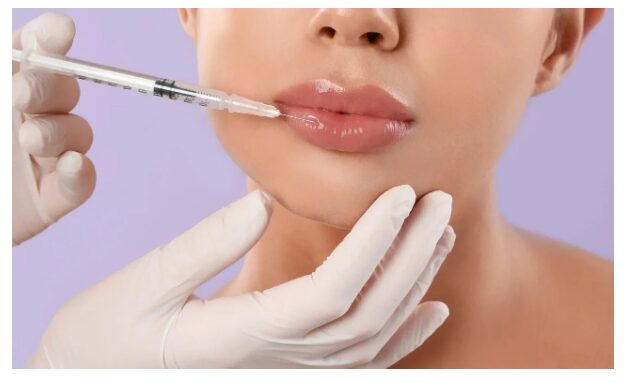Aging gracefully is something we all aspire to, but that doesn’t mean we can’t give nature a little help. With advancements in cosmetic treatments, looking youthful and refreshed has never been easier. Among the most popular options are dermal fillers and Botox. But how do you know which one is right for you? This blog post will break down the differences, benefits, and considerations for both treatments, helping you make an informed decision.
Understanding Dermal Fillers
Dermal fillers are injectable substances that add volume and fullness to the skin. They’re primarily used to fill in wrinkles, enhance lips, and restore lost volume in the face due to aging. Dermal fillers can be composed of various substances, including calcium hydroxylapatite, and poly-L-lactic acid. Each material has unique properties that make it suitable for specific types of facial enhancements. Also, one of the main types of dermal fillers are Hyaluronic Acid Fillers, which are naturally occurring substances in the body that help retain moisture and add volume to the skin. Dermal fillers work by plumping up the skin beneath wrinkles, making them less noticeable. They can also be used to add volume to areas like the cheeks and lips, creating a more youthful appearance. The results are immediate and can last anywhere from six months to two years, depending on the type of filler used.
The Benefits of Dermal Fillers
Dermal fillers offer several benefits for those looking to improve their appearance. They provide immediate results with minimal downtime, making them a convenient option for busy individuals. Additionally, the effects of fillers are reversible, allowing for adjustments if necessary.
Understanding Botox
Botox, short for botulinum toxin, is a neurotoxic protein that temporarily paralyzes muscles. It is widely used to treat dynamic wrinkles, which are caused by muscle movements such as frowning and squinting.
What Is Botox?
Botox is a purified form of botulinum toxin that is injected into specific muscles to temporarily reduce their activity. This leads to a smoother appearance of the overlying skin. Botox is FDA-approved and has been used for cosmetic purposes for over two decades.
How Does Botox Work?
Botox works by blocking the nerve signals that cause muscles to contract. When the muscles can no longer move, the skin smooths out, reducing the appearance of wrinkles. The effects of Botox typically last three to six months, after which the muscles gradually regain their ability to move, and the wrinkles reappear.
The Benefits of Botox
One of the primary benefits of Botox is its effectiveness in treating dynamic wrinkles. These include crow’s feet, forehead lines, and frown lines between the eyebrows. Botox treatments are quick, usually taking only about 10-15 minutes, and require no downtime. The results are noticeable within a few days and can help you look more relaxed and refreshed.
Comparing Longevity and Results
When deciding between dermal fillers and Botox, it’s important to consider how long the results last and what type of results you’re looking for.
Duration of Results
Dermal fillers generally last longer than Botox, with some types providing results for up to two years. Botox, on the other hand, usually needs to be repeated every three to six months to maintain the desired effect.
Type of Results
If you’re looking to add volume to your face or enhance certain features like your lips or cheeks, dermal fillers are the way to go. For treating fine lines and wrinkles caused by muscle movements, Botox is more effective.
Safety and Side Effects

Both dermal fillers and Botox are considered safe when administered by a qualified professional, but they do come with potential side effects.
Common Side Effects of Dermal Fillers
The most common side effects of dermal fillers include:
- Redness
- Swelling
- Bruising at the injection site
These side effects usually subside within a few days. In rare cases, more severe complications can occur, such as infection or allergic reactions.
Common Side Effects of Botox
The side effects of Botox are generally mild and may include:
- Temporary bruising
- Headaches
- Drooping eyelids (if the injection is not placed correctly)
These side effects are temporary and typically resolve on their own.
Cost Considerations
Cost is another important factor to consider when choosing between dermal fillers and Botox.
Cost of Dermal Fillers
The cost of dermal fillers varies depending on the type of filler and the amount needed. On average, you can expect to pay between $500 and $1,500 per syringe. Since fillers can last up to two years, the long-term cost may be lower compared to more frequent treatments like Botox.
Cost of Botox
Botox is typically priced per unit, with the average cost ranging from $10 to $20 per unit. Depending on the treatment area, you may need anywhere from 20 to 60 units, leading to a total cost of $200 to $1,200 per session. Since Botox treatments need to be repeated every few months, the long-term costs can add up.
Both dermal fillers and Botox offer unique benefits for those looking to reduce the signs of aging and enhance their appearance. Remember, the key to successful results lies in choosing the right treatment and the right practitioner.
Read More From Techbullion








